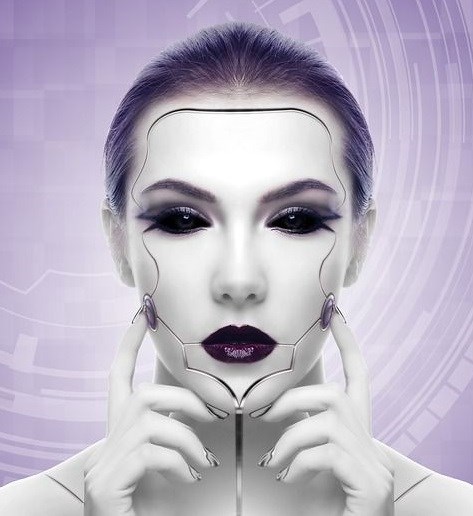RPA, the ghost in the ERP machine

Sophia is no ordinary robot
It’s not her fault but Sophia, the social humanoid robot developed by Hanson Robotics, is giving robots a bad name. In what can surely not be a coincidence, Sophia’s creators ticked every box for human empathy when they activated her on 14 February 2016.
Not only is this the day that Sophia essentially got her heart, but her name was also the most common baby name given to girls in 2015, with no doubt a big nod to iconic stars like Sophia Loren and Sophia Vergara. Speaking of looks, Sophia was designed to resemble Audrey Hepburn in appearance and, aesthetics aside, the word Sophia is the Greek word for wisdom.
Sure, she’s cute but that’s not what we want in a robot, is it?
In truth, Sophia is more a digital ambassador than simply a robot, looking and sounding just enough like a human to make her novel and interesting without being creepy.
Finding the balance between looking human-like without looking too human is a fine line defined by theorists as the “uncanny valley”, a hypothesis suggesting that if something that is not human looks too much like a human it will elicit strong, negative reactions in viewers. And it is these human-like characteristics; her expressiveness, aesthetics and full range of facial expressions that at once set her apart and cause her to be reviled by the robotics community.
So, what is a robot?
To be fair, most of us probably think of robots as clunky walking and talking machines processing paper with artificially intelligent voice recognition and reply software. The word robot has Slavic roots and literally means servitude or slave. A robot in its simplest definition is a machine able to automatically perform a series of complicated and often repetitive actions, typically programmed by a computer. By this definition, Sophia is no ordinary robot.
Most robots are in fact not physical, but rather computer coded software, programmed to do repetitive rules-based tasks in cross-functional and cross-application macros. So, while Sophia may appeal to our aesthetic side, the real value of software robots in a business automation context sits firmly in its ability to complete tasks at significantly faster speeds than humans, to do so relentlessly and without error, providing meticulous audit trails for compliance and at a scale that can rapidly be increased or decreased.
The problem with ERP’s
For decades, Enterprise Resource Planning (ERP) systems have provided the blueprint for business process automation, transforming and optimising data and corporate workflows. In isolation, these systems would be able to run seamlessly year-on-year.
In practice, however, there is almost always a shortfall between the expected benefits and actual benefits when implementing an ERP system. Organisations are more organic than we want to acknowledge, adopting legacy systems or unsupported software along the way, using outdated programming languages and more often than not ending up with poorly documented systems cobbled together over many years that cannot be integrated with the ERP.
Over time, this so-called “swivel chair” automation becomes a Catch22 since not only is the organisation now locked into a very specific way of doing things, it has become dependent on a narrow, customised system. The prospect of having to change it is not only daunting, it may also seem cost prohibitive.
The power of combining RPA’s and ERP’s
Software robots are bringing unprecedented changes to corporate workplaces by simulating tasks and activities typically performed by employees at both internal and web-based application level. Through this type of intelligent automation, ERP systems may be used more optimally, removing outdated and incompatible legacy systems.
The future of business automation will go far beyond what current ERP systems and new App-like plug-ins can deliver. Cloud-based ERP systems will almost certainly become ubiquitous, with emergent software technologies such as robotic process automation (RPA) gaining rapid traction as understanding increases regarding its application and potential to optimise ERP’s.
The use of these robots will allow for the achievement of substantial benefits through the rapid and relatively affordable automation of processes, making it possible to avoid having to replace core systems. Processes suitable for robotic process automation are typically recurring and rule-based high volume tasks with fluctuating frequency, in need of support outside of office hours and may be predisposed to human error. These processes are usually not high on the IT department’s agenda, with an insufficient business case to justify an ERP system change.
Set your workforce free!
However, combining the emergent RPA technology with a business-centric solution such as an ERP system will enable the freeing up of your workforce to perform more challenging aspects of their work, ensuring that capacity is optimised throughout.
So, while Sophia may be an excellent marketing ambassador for your business in reception, your robotic process automation workforce will keep ensuring that your ERP runs smoothly, working non-stop and blissfully unaware that marketing and operations are actually not supposed to get on, even if Sophia is not like them.

About Craig Johnston
Craig Johnston is the marketing manager at Seidor Bluekey and has been in the marketing industry for almost a decade. With vast experience in marketing strategy and campaign execution, he has developed a solid foundation in both traditional and digital marketing.Related
SAP links with Databricks to launch Business Data Cloud 13 Feb 2025 #BizTrends2025: Enhanced digital enablement – the future of long-term insurance in South Africa 13 Jan 2025 How much does your factory depend on memory? 18 Nov 2024 Advent seals Syspro deal with Compcom approval 1 Oct 2024 A single system for engineering companies in South Africa 17 Jul 2024 Education in the spotlight at Singularity South Africa Summit 2024 5 Jul 2024

































